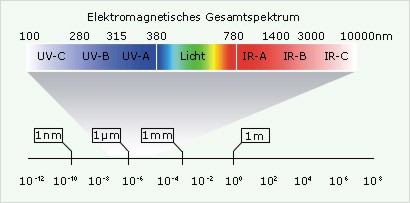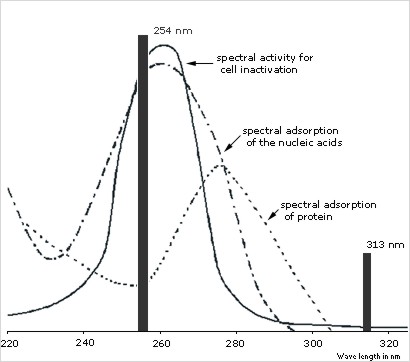UV technology - Basics of UV radiation and mechanism of action
Ultraviolet (UV) - radiation is - like visible light - electromagnetic radiation.The physical properties of UV-radiation can be (like all electromagnetic radiation) as a wave or energy (photon) represent. So here are the basic optical laws of reflection, scattering and transmission. The biological effects of UV radiation are distinguished into three spectral regions:
| UV-A 315 - 380 nm (long wave) UV-B 280 - 315 nm (medium wave) UV-C 100 - 280 nm (short wave) |
 |
Inactivation of microorganisms with ultraviolet rays is caused by photochemical reactions in the nucleic acids of microorganisms without adding pollutants. This means that UV radiation (photons) strike the center of information and replication of the microorganism, the Desoxiribonucleinsäure (DNS). The absorption spectrum of DNA and the cell inactivation effect spectrum is characterized by broad absorption maxima at 260 nm
Consequently, for a suitable spot inactivation, which emit a spectral range between 240-290 nm. The resonance lines of our UV lamps are located at 254 nm and satisfy these conditions very well, because they are close to the two absorption maxima. The photochemical reaction in the microorganisms acts within a split second.The implementation depends on the irradiance of the UV lamps.



